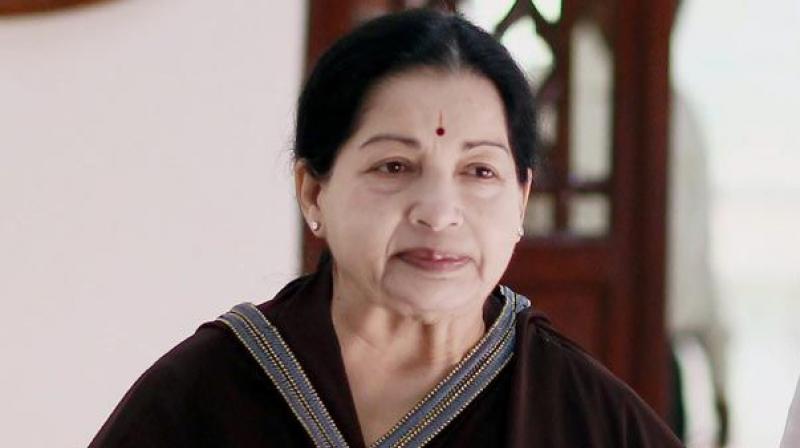Jayalalithaa changed face of Dravidian politics

Chennai: Decimating the DMK in the 1991 Assembly elections, J Jayalalithaa fondly referred to by her followers as ‘Puratchi Thalaivi’ changed the face of the Dravidian politics which was centred around anti-Brahminism, rationalism and Tamil nationalism. But, like any other successful political leader, she stuck the to the law of dialectics which states nothing except change is permanent, shifting her stand on key issues, finally leaning towards Tamil sentiments on some of the key issues.
She became the first leader of the Dravidian movement to visit temples, openly and her partymen followed suit taking part in all kinds of rituals, poojas and yagnas, considered alien to the ideology of the movement’s founder E.V.R. Periyar.
When her mentor MGR visited the Kollur Mookambiga temple, he kept it a private affair, besides explaining that he visited the temple, since his mother Sathya was a devotee of the Goddess. But, Jayalalithaa who faced scathing attacks from her detractors and staunch loyalists of rationalist ideology remained uncompromising on her beliefs, which she never attempted to conceal from public eye.
When DMK treasurer M.K. Stalin followed Jayalalithaa’s path and visited temples before the 2016 Assembly elections, following with an explanation that 90 per cent of people in DMK are Hindus, there was no criticism from anywhere.. Such a declaration would have been impossible in Dravidian politics, before the advent of Jayalalithaa, but Stalin’s visit did not attract any resentment and accepted as a routine affair.
As far as Tamil nationalist rhetoric is concerned, there were two phases in Jayalalithaa’s political career. The Eelam rhetoric was put in the backburner in her first two terms in power. Her fierce anti-LTTE stand after the assassination of former Prime Minister Rajiv Gandhi pushed the DMK to total silence on the Lankan Tamils issue, which was pushed to smaller players.
When Jayalalithaa brought a resolution seeking extradition of LTTE leader Velupillai Prabhakaran in 2002, the DMK did not vote against it and stayed neutral, marking a big shift in Dravidian politics known for its Tamil nationalist fervour..
However, after the end of the Lankan military offensive in May 2009, she shifted her stand following widespread sympathy for the civilian casualties. She used the Mullivaikkal massacre as a whip to flay the DMK leader M. Karunanidhi and take away the aura of champion of Tamils from her arch rival. After coming to power in 2011, she appropriated some of the demands made by Tiger supporters and passed a series of resolutions against the island government, including referendum on separate Tamil Eelam and international probe into the war
crimes.
The political culture too underwent a drastic transformation with loyalty to leadership turning into the most preferred criteria than ideological commitment. The party leaders vied with one another to show their loyalty through their body language, sycophancy and derogatory attacks on opponents.
The DMK partially took a leaf from the rival’s book, taking Dravidian politics to the rock bottom of personality politics. The reservation politics of Dravidian parties never underwent a change after Jayalalithaa’s dominance, as she herself followed the advice of DK leader K. Veeramani to protect the 50 per cent reservation for backward communities, earning the title of ‘Samooga Needhi Katha Veeranganai’.
She was described as the evolution of Dravidian movement by the DK, the pioneer of the anti-Brahmin movement. In the Dravidian movement, which had its roots in the anti-Brahminical moorings of the Justice Party, she went on to emerge and remain the unchallenged head of one of its key mass movements, impacting and transforming the Dravidian politics of her time.

